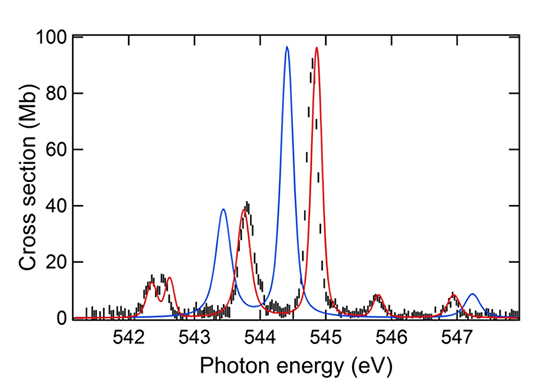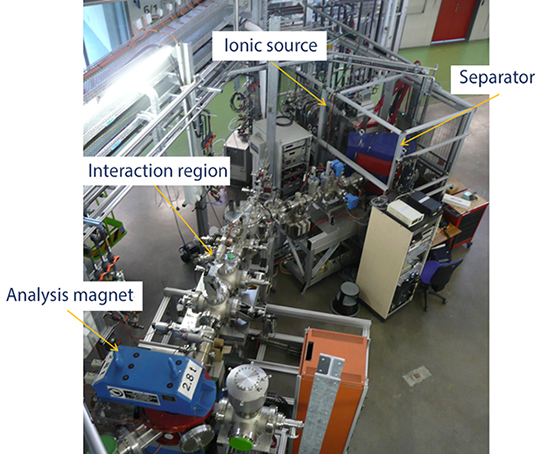How to combine theories and experiments to obtain the best astrophysical models? This is the issue scientists have been trying to solve using synchrotron radiation.
Perched at thousands of kilometers and on elliptic orbit, space telescopes Chandra and XMM-Newton are watching out the far regions of space, and collect X-rays from large sources such as binary stars and black holes. The absorption spectra obtained are confirming the particular abundance of iron and oxygen in the interstellar medium and in several oxidation states. To interpret these results, scientists have been developing codes, based on quantum physics, to model the spectra. This is the case for an international team of theorists and researchers who used the synchrotron radiation on the PLEIADES beamline at SOLEIL to obtain experimental data on oxygen ions, which have then been compared and integrated to theoretical models in order to improve them.

Comparison of the models before (in blue) and after correction (in red) with the experimental data collected on the PLEIADES beamline for the three times oxidized oxygen ion O3+. In red, the spectrum obtained by calculation after integration of the corrections to the code is really close to the values of the experiment.
To do so, the team used the special device MAIA on the beamline, one of the two single ones in the world available to perform this kind of experiments. Scientists then created an ionic plasma, from which they extracted the interesting ions. Then they made ions interact with the synchrotron beam. The high resolution available on the beamline helped to determine in absolute value the width, position and intensity of the absorption lines of the spectra, data needed to evaluate the chemical composition and temperatures of the astrophysical plasma.
In the end, the results showed that models used until there could be distant from reality. After integrating the results obtained using synchrotron facilities, theoretical models were highly improved. Astrophysical modeling programs should thus integrate these new results to be more efficient.

MAIA device on the PLEAIDES beamline is one of the single ones in the world able to welcome this kind of experiments.
